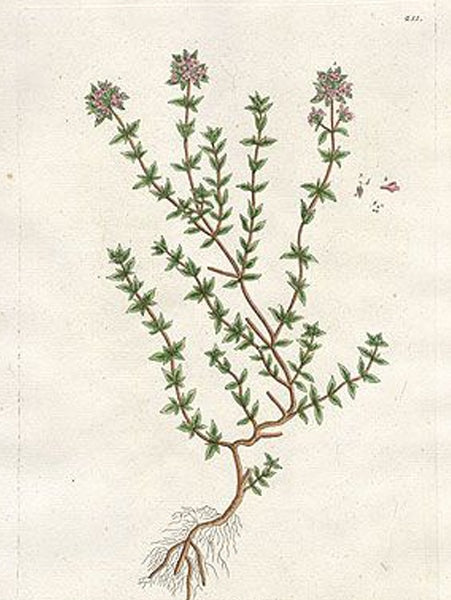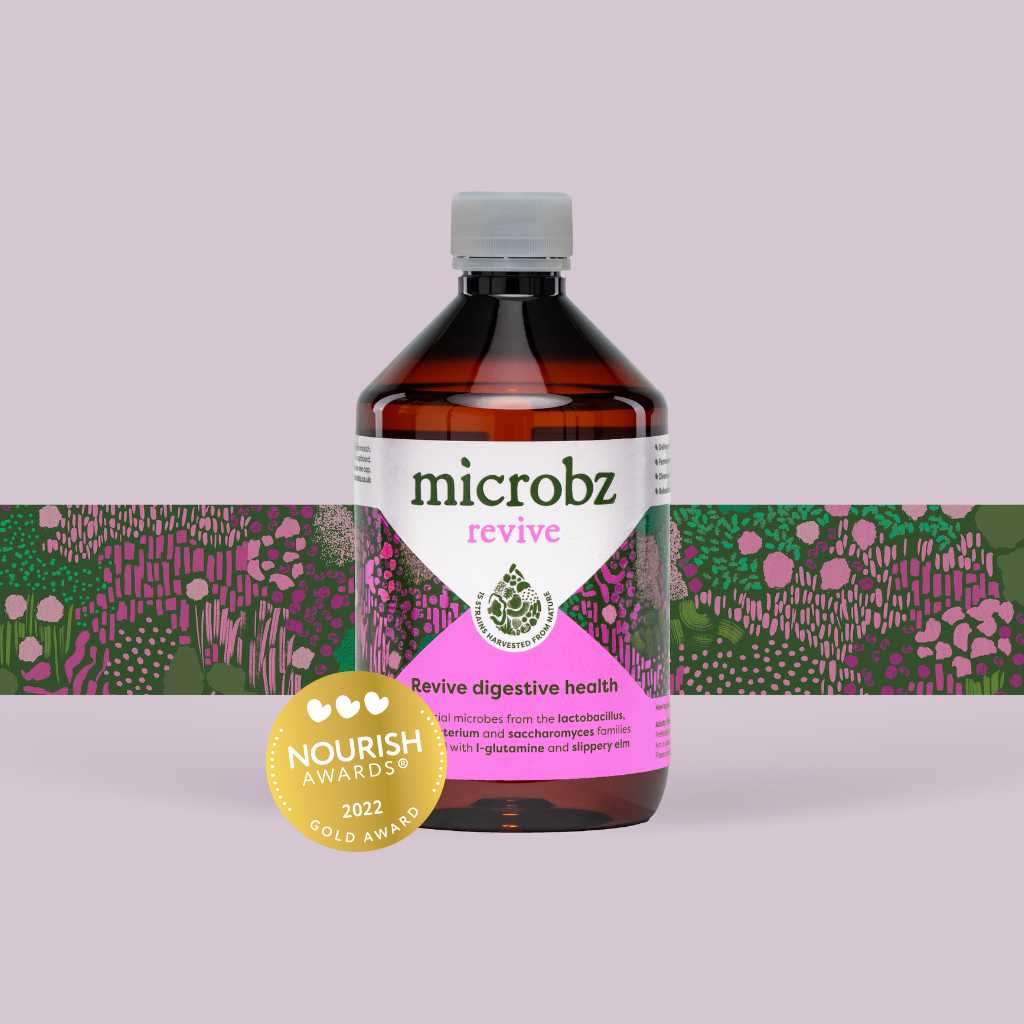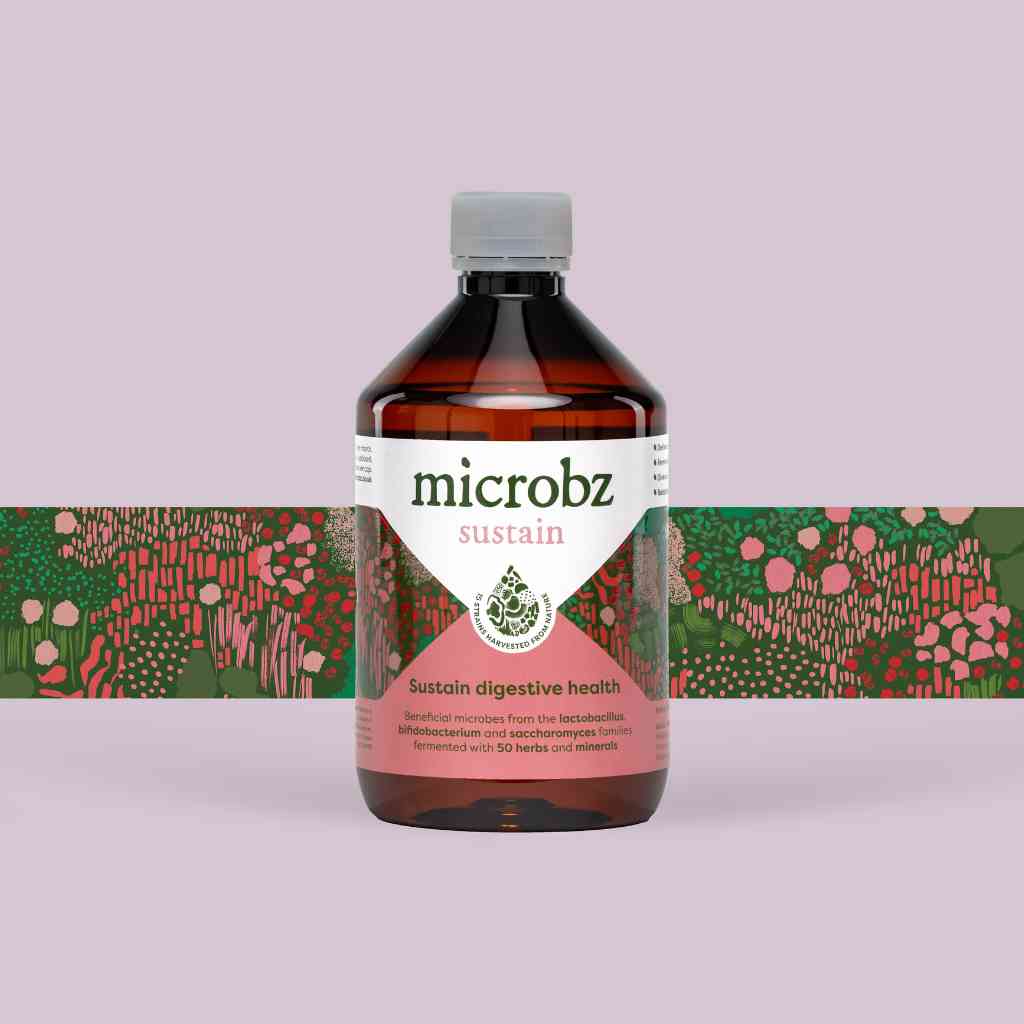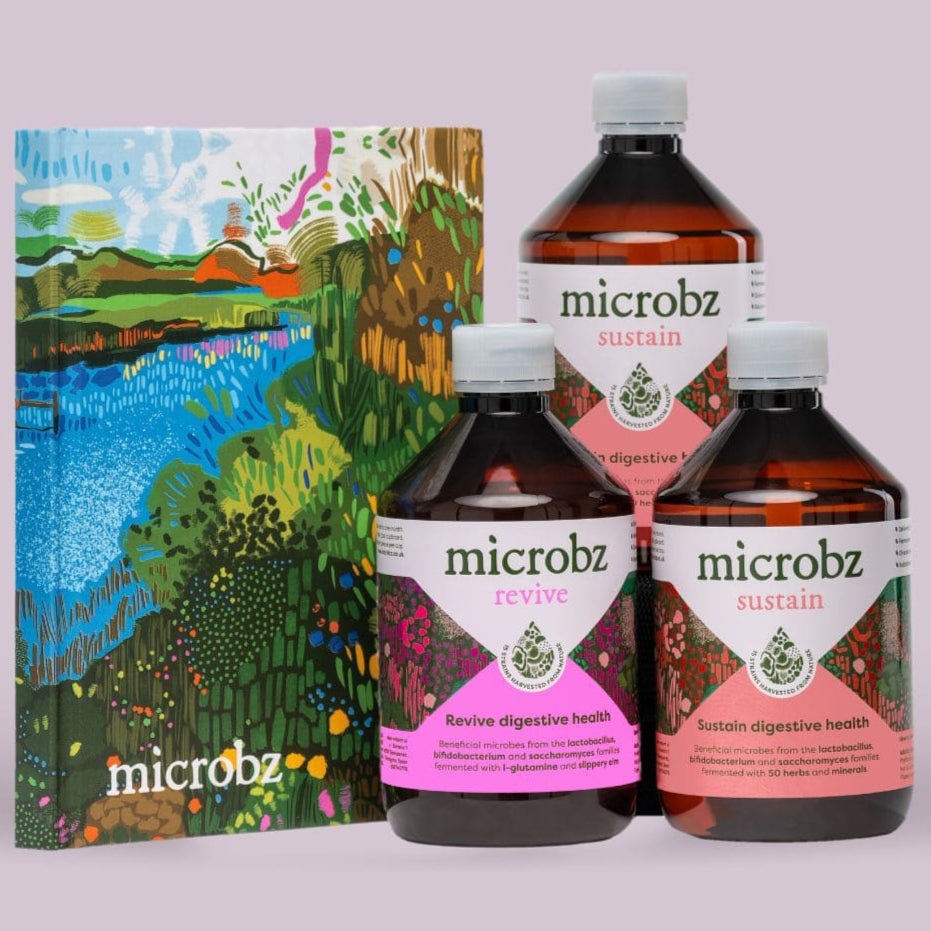Thyme
Thymus vulgaris

Family: Laminaceae
Which probiotic is it in?: Thyme is a key herb in Breathe
Habit and cultivation: A Mediterranean native now growing as a cultivated garden herb in most areas of the world. Grown from seed or cutting and will self sow. It is often necessary to add lime to the soil for a good crop as thyme insists on a pH of at least 6.
Actions (known for): Anti-bacterial, anti-fungal, anti-tussive, expectorant, antiseptic, carminative, spasmolytic, bitter tonic, astringent and anthelmintic.
History of Thyme
Parts used from the Thyme
Leaves, harvested just before flowering.
Constituents (bio available chemicals):
Volatile oil: thymol 40%, carvacrol, cymol, borneol and linalool. Tannins. Bitters. Flavonoids. Triterpenoid saponins
Nutritional constituents:
Vitamins: B-complex, C and D. Minerals: rich in iodine, smaller amounts of other minerals vary.
Indications:
Bronchitis, diarrhoea, enuresis, gastritis and tonsillitis.
Dosage:
Liquid extract (1:2): 15-40ml per week. Infusion: 1-4g 3 x daily.
British Herbal Pharmacopoeia
Whooping cough and bronchitis.
Cautions for therapeutic doses
Avoid during first and second trimester of pregnancy.




